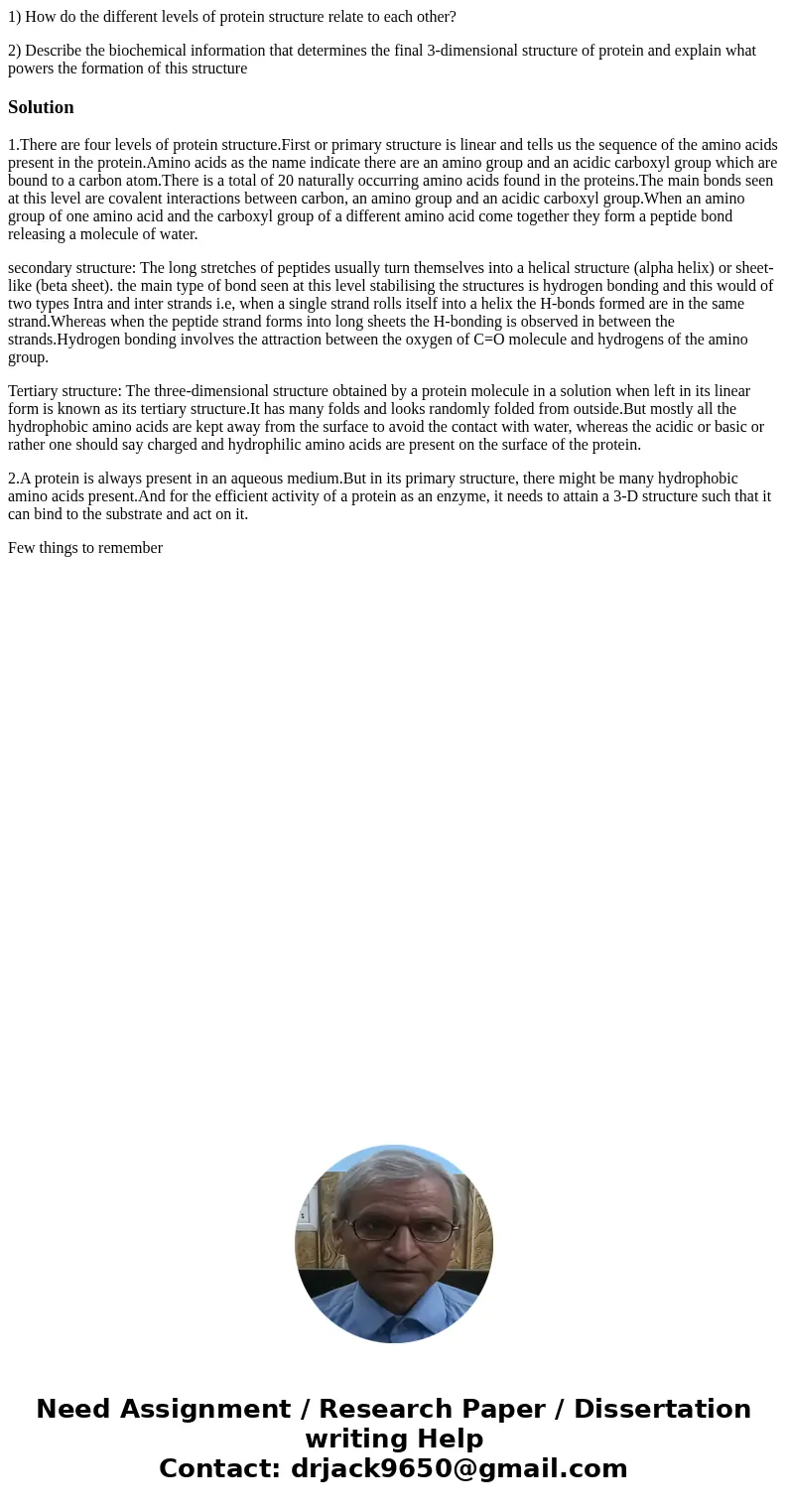1 How do the different levels of protein structure relate to
1) How do the different levels of protein structure relate to each other?
2) Describe the biochemical information that determines the final 3-dimensional structure of protein and explain what powers the formation of this structure
Solution
1.There are four levels of protein structure.First or primary structure is linear and tells us the sequence of the amino acids present in the protein.Amino acids as the name indicate there are an amino group and an acidic carboxyl group which are bound to a carbon atom.There is a total of 20 naturally occurring amino acids found in the proteins.The main bonds seen at this level are covalent interactions between carbon, an amino group and an acidic carboxyl group.When an amino group of one amino acid and the carboxyl group of a different amino acid come together they form a peptide bond releasing a molecule of water.
secondary structure: The long stretches of peptides usually turn themselves into a helical structure (alpha helix) or sheet-like (beta sheet). the main type of bond seen at this level stabilising the structures is hydrogen bonding and this would of two types Intra and inter strands i.e, when a single strand rolls itself into a helix the H-bonds formed are in the same strand.Whereas when the peptide strand forms into long sheets the H-bonding is observed in between the strands.Hydrogen bonding involves the attraction between the oxygen of C=O molecule and hydrogens of the amino group.
Tertiary structure: The three-dimensional structure obtained by a protein molecule in a solution when left in its linear form is known as its tertiary structure.It has many folds and looks randomly folded from outside.But mostly all the hydrophobic amino acids are kept away from the surface to avoid the contact with water, whereas the acidic or basic or rather one should say charged and hydrophilic amino acids are present on the surface of the protein.
2.A protein is always present in an aqueous medium.But in its primary structure, there might be many hydrophobic amino acids present.And for the efficient activity of a protein as an enzyme, it needs to attain a 3-D structure such that it can bind to the substrate and act on it.
Few things to remember

 Homework Sourse
Homework Sourse